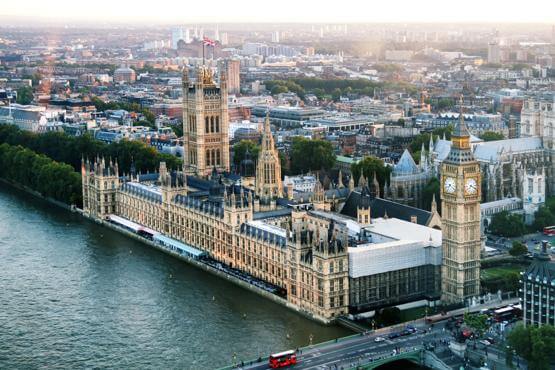What steps should an employer be considering before reopening?
Employers will need to consider whether they genuinely need to reopen premises or whether work can continue to be carried out remotely. If employees can work from home, they should continue to do so.
Please note: the information contained in this legal update is correct as of the original date of publication
Employers will need to consider whether they genuinely need to reopen premises or whether work can continue to be carried out remotely. If employees can work from home, they should continue to do so.
If reopening is required, then employers will need to carry out risk assessments to address the risk presented by coronavirus in respect of their work activities. By way of example only, employers will need to consider how social distancing principles can be adhered to, including on entry/exit, how work-stations are set out, how breaks should be dealt with, and whether working hours need to be adjusted; whether any additional equipment, such as screens or dividers, is required; whether hygiene facilities are appropriate (and stocked) in particular for handwashing; what additional cleaning will be required; and what their plan will be if an employee develops coronavirus-related symptoms.
Employers in shared buildings or whose premises are accessible by members of the public will have to consider how social distancing and other health and safety measures can be complied with in shared areas. Employers will also need to be mindful about the extent to which any coronavirus-related changes affect their existing health and safety assessments to make sure that a change to reduce risks in one aspect does not increase risks in another.
The government has published eight separate guidance documents setting out how different types of workplace can become, in their terminology, “COVID-19 Secure”. This can be read alongside specific HSE guidance including Working Safely During the Coronavirus outbreak - a short guide. The government guidance covers: construction and other outdoor work; factories, plants and warehouses; homes (other people’s); labs and research facilities; offices and contact centres; restaurants offering takeaway or delivery; shops and branches; and vehicles. Whilst there are some common threads running through each of these documents, employers should familiarise themselves with the applicable guidance – and in some cases, this may require consideration of multiple documents to ensure that they are aware of the applicable guidance for different aspects of their business. A link to the government guidance can be found here.
Employers will need to consult unions or employees about their health and safety plans to ensure that relevant risks are identified and addressed. The government is expecting employers with more than 50 employees to publish their plans on their website. Employers will also need to consider their communication plans and, in particular, how they will notify employees of their return and reassure them of the steps taken to protect health and safety, and how they will practically engage with their workforce in advance of any return (including providing information or training in respect of new processes and procedures) and address any concerns raised. As part of this, the government has prepared a poster for employers to display once they have made their workplace “COVID-19 Secure”. This includes them confirming that they have:
- carried out a coronavirus risk assessment;
- hygiene/cleaning procedures in place;
- taken all reasonable steps to help people work from home;
- taken all reasonable steps to maintain a 2-metre distance; and
- where a 2-metre distance isn’t possible, done everything practical to manage transmission (although this does appear to attempt to impose a higher standard than the usually applicable “reasonably practicable steps”).
Lastly, employers will need to consider how to effect any contractual changes – such as changes in working hours – that may be required.
Remember the aim is to eliminate the risks identified by the risks assessment and where that is not possible to take reasonably practicable steps to control them.
Can I test employees before allowing them to attend work?
First and foremost, you can’t force employees to undergo testing. If an employer does wish to ask employees to undergo testing (such as temperature testing), they will need to assess whether this is a reasonable request. This will depend upon the current employment contracts in place, the nature of the test – the less invasive, the more reasonable the request is likely to be – and the purpose/aim of the process. However, apart from in circumstances where someone has developed coronavirus-symptoms (where they are encouraged to apply for a test to see if they do in fact have the virus), the government is not currently advocating temperature testing (or routine coronavirus testing) for the general public. It may therefore be hard for an employer to defend why such testing is necessary and a number of employment issues could arise if employees are unwilling to agree to the process.
Testing involves the processing of personal data about individuals and will also create “special category personal data” and so there are significant data protection and privacy issues that would need to be considered before an employer takes such an approach.
In view of the above, if you are considering testing, we’d suggest that specific legal advice is sought. The ICO has also issued specific guidance in respect of coronavirus testing.
Are there any additional steps that will be required after reopening?
Yes. Employers will need to keep their risk assessments under review and be vigilant in ensuring that additional precautions are being understood and adhered to by members of staff. Employers will also need to make sure that processes are working as intended, and be prepared to go back to the drawing board if things are not working as hoped.
Employers should consider the level of support provided to employees – just as lockdown created a whole range of different issues and stressors, for some employees returning to work will create the same. Similarly, employers should ensure that they have processes and procedures in place for employees to be able to (safely) raise concerns. Managers should be trained in how such complaints should be dealt with and should be familiar with the rules and protections afforded to employees who raise health and safety – or whistleblowing – concerns.
Which employees should be returning?
Employers should consider whether employees are genuinely required to attend work premises or if homeworking can remain in place to limit the numbers. Just because the employer needs to reopen does not necessarily mean that all employee will no longer be able to work from home. At this stage, employees would be complying with government guidance by working from home where they are able to.
For those employers who do need staff to attend premises, then employers will need to consider the numbers required and how this may best be addressed in their workforce. For example, employers will need to consider how to manage those who have been shielding, those who live with someone who is shielding, those who are juggling childcare (or other caring) responsibilities, those who are ill, those who would be reliant on public transport to get to and from work, those who have only recently been furloughed (and so who have been furloughed for less than three weeks) or those who have other particular concerns about the lockdown being lifted.
If you’d like to discuss particular circumstances, please let us know.
What if fewer employees are required on reopening?
Employers will need to consider the likely length of time that fewer employees will be needed. For some, this will clearly be a temporary measure and therefore one that may well be managed through continued use of the Coronavirus Job Retention Scheme (see below) for some employees. In these circumstances, engagement with employees will be key so that employers can identified those who are keen to return and those who have genuine reasons to remain furloughed.
For others, it will be clear that there is a more permanent reduction in the number of employees needed; in these cases, employers may need to consider redundancy processes or attempt to agree reductions in working hours.
How long will the Coronavirus Job Retention Scheme be available?
The Government has indicated that the CJRS will remain in its current form until July. There will then be a modified scheme available between August and October 2020. Full details of that modified scheme have not yet been made available but the Government has indicated that employers will be expected to contribute financially to the payments being made to employees, and that employees will be able to work part-time for the employer during this period.
What happens if an employee refuses to return?
The steps an employer can take will depend on the employee’s reasons as to why they do not wish to (or feel they can’t) return and it will be important for employers and employees alike to maintain a dialogue during this period – communication will certainly be key! There are many potential reasons why an employee may take this stance – such as an employee who has no childcare arrangements due to the school closures remaining in place, or an employee who is scared to use public transport and has no other means of getting to work.
Employees who have been repeatedly hearing the message “stay home” may also understandably be anxious about returning to work and worried about whether their workplace is safe. Communication and engagement with the workforce about the steps taken to make the workplace “COVID-19 Secure” will be critical to make sure that employees have all the information available to them about the protections in place and any new rules and procedures that they will need to adhere to. Whether an employee is reasonable in their belief about the safety of their workplace will be assessed based upon the information known by the employee at the time.
Where possible, employers and employees should be flexible – this could include changes to working hours to allow travel “off peak” or to allow for childcare to be juggled between two working parents/carers. This flexibility will not necessarily just be one-sided – employers may need to ask their employees to work in more flexible ways to allow social distancing measures to be complied with.
If an employee still is unable/unwilling to return to the workplace other types of leave – such as furlough, annual leave, dependents leave, parental leave or unpaid leave – or, in certain circumstances, sickness absence, may also be appropriate.
Employers should take care (and may wish to consider seeking legal advice) before taking any action against an employee in these circumstances, particularly if the employee has raised health and safety concerns.
What should an employer do if an employee develops coronavirus symptoms after reopening?
Employers should have included this within their coronavirus risk assessment and so should already have a plan in place including how to isolate the employee and get them safely home; whether to temporarily close the premises, or part of the premises to allow for deep cleans to take place; and a communications plan for notifying other employees who have potentially come into close proximity to the virus.
What if an employee attends work but then feels unsafe? Can they just leave?
There is existing legislation in place which protects employees from either being subjected to a detriment or being dismissed (including being selected for redundancy) because they have left work, are proposing to leave work, or are refusing to return to work in circumstances of danger which the employee reasonably believes to be serious and imminent, and which the employee could not reasonable be expected to avert.
For further information, please see here.
Can employees be required to take their holiday at particular times to help manage quieter periods?
Under the Working Time Regulations 1998, an employer can require an employee to take their statutory leave (5.6 weeks’ leave) on particular days by giving twice as many days’ notice as the period of leave required to be taken, assuming that this right has not been varied by a “relevant agreement”. Any contractual leave above the level of statutory leave would be dealt with in line with the contract. In either case, in line with its general obligations, the employer will need to act in a way that is not unreasonable, arbitrary or capricious.
Consideration will also need to be given to whether the employee can actually properly rest, relax and enjoy the period of holiday – i.e. whether the fundamental purpose of the holiday can be met. Whilst this is unlikely to be an issue where employees have returned to work, it may be more relevant for employees who remain furloughed due to them shielding.
Can an employer refuse an employee leave to help manage busier periods?
Under the Working Time Regulations 1998, an employer can refuse an employee their statutory leave by giving the required notice, assuming that this right has not been varied by a “relevant agreement” but only where they have a good reason for doing so. The notice period here will be the length of the employee’s holiday. Again, any contractual leave above the level of statutory leave would be dealt with in line with the contract, and the same requirement not to act in a way that is unreasonable, arbitrary or capricious will apply.
The “good reason” qualification is a new addition to the wording of the Working Time Regulations and is not defined. Employers should therefore think carefully about whether holiday requests can be accommodated and, if not, confirm the reasons why this is the case.
Can holiday be carried forward if it cannot be taken?
Employees can carry forwards 1.6 weeks’ of their statutory leave if there is a written agreement allowing for this. They can also carry forward contractual leave above the level of statutory leave, with the employer’s agreement.
New provisions have also been introduced allowing employees to carry forward 4 weeks of their statutory annual leave entitlement. The circumstances in which such leave can be carried forward are limited – it can only be carried forward where it is “not reasonably practicable” for the employee to take that leave as a result of the effects of coronavirus (including on the employee, the employer or the wider economy or society). Any carried forward leave must be used in the next two leave years. Payment in lieu cannot be made for this holiday, except where employment terminates.
The Government has issued guidance as to when it may would not be reasonably practicable for an employee to take leave and this can be found here.
What if an employee was part way through their probation period when they were furloughed? What happens on their return?
This will depend upon the terms of the probation. However, in most cases, where an employer has not been able to assess an employee’s performance due to absence, it would be reasonable to extend the probation period by the length of the absence. This would need to be confirmed with the employee. If you would like to discuss particular circumstances, please let us know.
What about workers? Do the same principles above apply?
Although we have used the term “employees”, the vast majority of the above principles will apply to workers. There are a few exceptions – for example, redundancy and unfair dismissal rights will only apply to employees. Provisions in respect of health and safety detriment are also phrased as being limited to employees, although, if pushed, may be wide enough to cover workers; in any event, workers are protected under the whistleblowing detriment provisions, and the whistleblowing provisions can include health and safety disclosures.
Contact

Mark Hickson
Head of Business Development
onlineteaminbox@brownejacobson.com
+44 (0)370 270 6000







































